Tackling child poverty - fourth year progress report 2021 to 2022: annex A - measurement framework
Measurement framework with the latest data on the drivers of child poverty. The 23 indicators in the child poverty measurement framework are intended to monitor these drivers of poverty. They form part of a wider monitoring and evaluation strategy.
Driver: Income from employment
Indicator 1: Hourly pay
Average hourly earnings, in 2019/20 prices, of low income households (bottom three income deciles) with children where at least one adult is in employment. Figures for all households with children are also provided for context
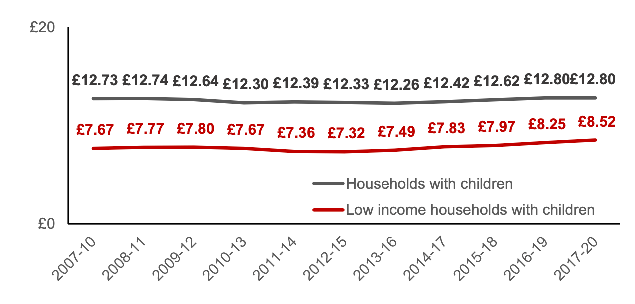
How this indicator relates to the child poverty targets:
- Relative poverty √
- Absolute poverty √
- Low income + material deprivation √
- Persistent poverty √
Hourly pay is a direct driver of income from employment, and therefore influences all four targets. Because poverty is measured at the household level, the hourly pay indicator monitors the average hourly pay per household rather than per parent. Earnings for all years are presented in 2019/20 prices, in order to adjust for inflation when looking at trends over time.
Indicator 2: No Paid employment
Percentage of children living in households where no adult is in paid employment.
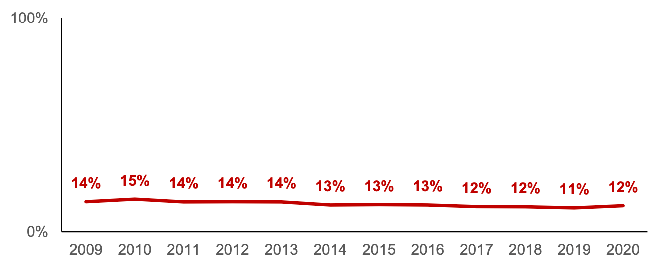
How this indicator relates to the child poverty targets:
- Relative poverty √
- Absolute poverty √
- Low income + material deprivation √
- Persistent poverty √
Hours worked is a direct driver of income from employment, and therefore influences all four targets. Households with no-one in paid employment are at significantly higher risk of being in poverty.
Indicator 3: Hours worked
Average (median) number of hours of paid employment per working-age adult, in low income households (bottom three income deciles) with children where at least one adult is in employment. Figures for all households with children are also provided for context.
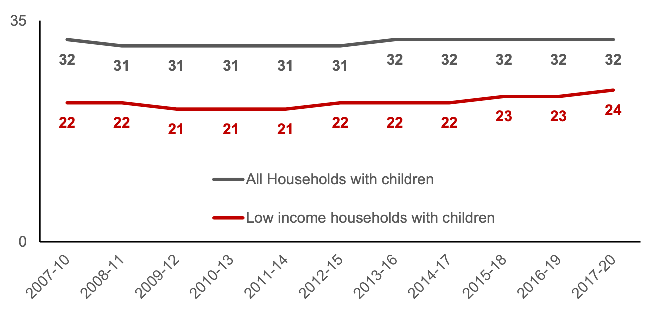
How this indicator relates to the child poverty targets:
- Relative poverty √
- Absolute poverty √
- Low income + material deprivation √
- Persistent poverty √
Hours worked is a direct driver of income from employment, and therefore influences all four targets. The risk of poverty reduces as the number of hours worked increases.
Indicator 4: Under-employment
Percentage of parents who are in work but would prefer to work more hours for the same rate of pay.
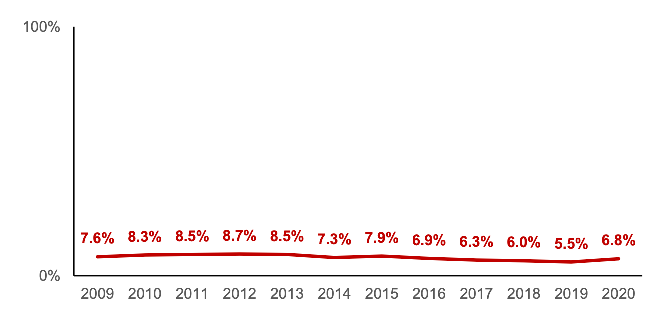
How this indicator relates to the child poverty targets:
- Relative poverty √
- Absolute poverty √
- Low income + material deprivation √
- Persistent poverty √
The number and type of jobs available in the labour market have an impact on parents' hours worked, through the employment opportunities they have access to.
Indicator 5: Underutilisation of skills
Percentage of employed working age (16-64) parents with degrees who are in low or medium skilled occupations.
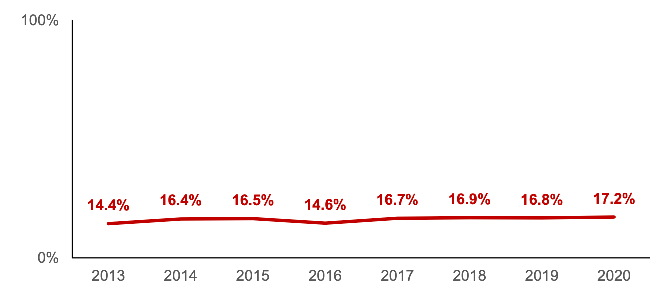
How this indicator relates to the child poverty targets:
- Relative poverty √
- Absolute poverty √
- Low income + material deprivation √
- Persistent poverty √
The number and type of jobs available in the labour market have an impact on parents' hourly pay, through the employment opportunities they have access to.
Indicator 6: Parents' qualifications
Percentage of parents with no or low qualifications.
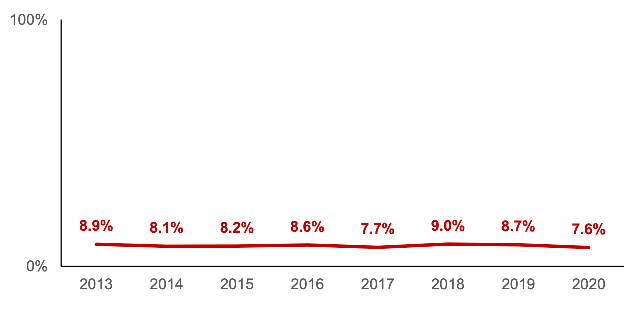
How this indicator relates to the child poverty targets:
- Relative poverty √
- Absolute poverty √
- Low income + material deprivation √
- Persistent poverty √
People with higher qualifications are much less likely to experience poverty than those with no or lower qualifications. Skills and qualifications affect income from employment in two main ways: the likelihood of getting a job, and how much someone is paid.
Indicator 7: School leavers attainment gap
Percentage points gap between the 20% least deprived Scottish Index of Multiple Deprivation (SIMD) areas and the 20% most deprived areas in the percentage of school-leavers who have achieved Scottish Credit and Qualifications Framework Level 5 or better.[1]
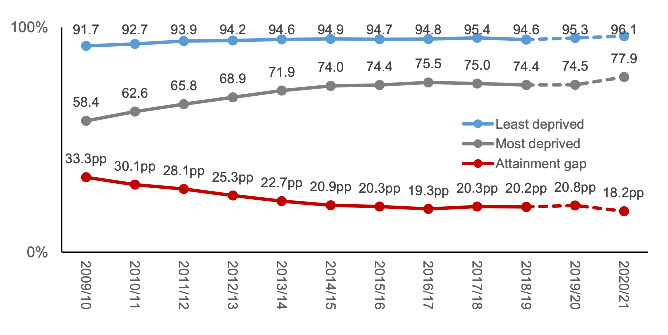
How this indicator relates to the child poverty targets:
- Relative poverty √
- Absolute poverty √
- Low income + material deprivation √
- Persistent poverty √
Children growing up in the 20% most deprived areas tend to have lower attainment than those in the 20% least deprived areas – the 'attainment gap'. Policies to close the attainment gap could impact on all four child poverty targets if they lead to an improvement in work prospects for current children who are old enough to become parents before 2030.
Contact
Email: tcpu@gov.scot
There is a problem
Thanks for your feedback